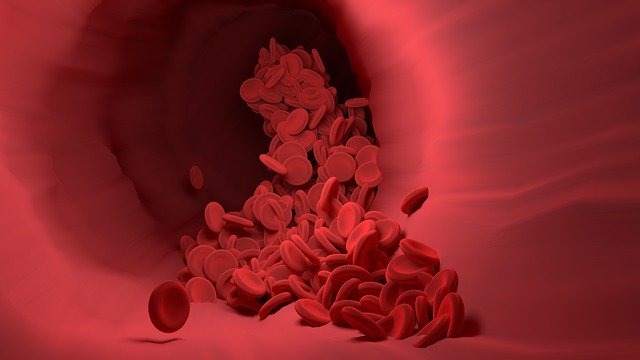FDA Approval
The FDA has recently approved two generic versions of apixaban and from the amount of apixaban I’m seeing used in clinical practice, this is a great thing for overall healthcare and drug costs. Here’s the FDA’s statement.
Because of this switch to generic apixaban availability as well as the recent 2019 atrial fibrillation guidelines, I anticipate apixaban use to dominate other anticoagulants. Apixaban is not without clinical quirks. Here are a couple of common issues that may come up with apixaban.
Converting Warfarin to Apixaban
While the atrial fibrillation guidelines now prefer NOACs (AKA DOACs) like apixaban over warfarin, cost concerns may have been one factor that inhibited providers from switching warfarin over to apixaban. That should no longer be a major issue over the next couple of years as generic apixaban prices should go down. For those looking to transition warfarin to apixaban, here’s how you do it.
Stop warfarin and start apixaban when INR is <2.
That’s not so bad, is it?
Dose Adjustments
- Age. Patients who are 80 years old and older
- Poor kidney function. Patients with a creatinine of 1.5 or greater
- Low body weight. Patients who are less than 60 kg.
When studying for exams, I always remember the numbers 80, 60, 1.5. This is a good stimulus for me to remember these factors and make sure the dose is adjusted appropriately. Another tip if you don’t have labs, would be to ask the patient about their diagnosis history (such as, have you had trouble with your kidneys in the past?)
The usual dose of apixaban in atrial fibrillation is 5 mg twice daily. If the patient has two of the above three factors, the apixaban dose should be reduced to 2.5 mg twice daily.
Apixaban Drug Interactions
Apixaban is not free from drug interactions. Fortunately, it doesn’t have a lot of really common drug interactions, but it definitely has some significant ones. If I don’t have a full medication list, I keep my eye open for certain disease states where interacting drugs may be used.
HIV/AIDS medications do have some interactions with apixaban. If you come across a patient needing anticoagulation and is treated with antiretroviral therapy. Look up the interactions. This is what I have to do because I can’t remember them all.
Classic 3A4 inhibitors. Drugs like amiodarone, clarithromycin, cyclosporine, azole antifungals, and diltiazem all have the potential to increase concentrations. Be cautious with these and monitor patients for bleed risk closely.
Classic enzyme inducers: Carbamazepine, rifampin, and St. John’s wort can all potentially lower concentrations of apixaban.
This is not an all-inclusive list, but I just wanted to give you a sense of some of the medications that might have significant impacts on apixaban concentrations. When you are reviewing what conditions a patient has, look out for AIDS, fungal infections, seizure disorder, and bacterial infections. These are a few conditions where medications that interact with apixaban may be used.
I discuss apixaban further in this podcast episode.
- 30 medication mistakes PDF
- 18+ Page Drug Interaction PDF
- 10 Commandments of Polypharmacy Webinar based on my experiences in clinical practice



great tips always….I listen to you in my car as my drive to work is about 40 minutes….keep up the great job!
Thanks much! – Eric
Are you recommending apixaban in patients weighing over 120 kg (or a BMI cutoff)? Its a quite a debate in our shop and I prefer not to make these calls in the ED w/o some consultation with thrombosis, etc. Less worried about AFib vs PE, but I also want it to fit in my patient’s life, so a DOAC is definitely better on that front.
Side note ISMP recommends DOAC over NOAC because NOAC was misread as No AC (no anticoagulation). https://www.ismp.org/sites/default/files/attachments/2017-11/ISMP128-Antithrombotic%20FAQ-021017.pdf
Took me awhile to make the change, I was partial to DOA but that abbreviation is already taken in the ED / EMS world.
Have you gotten th generic? I thought is was “approved” but that it not going to launch for 1-2 years.
Haven’t seen it yet, but yes, there is always lag time between FDA and when it actually shows up. Haven’t heard a specific on how long the wait will be yet…
I would expect some legal challenges, some have already occurred and some players in the generic field have backed out and some have “settled”.
Here’s some further commentary “First generics to Bristol-Myers and Pfizer’s Eliquis are here. But can they launch before 2026?” https://www.fiercepharma.com/pharma/first-generics-to-bristol-myers-and-pfizer-s-eliquis-are-here-but-might-not-launch-until
I have a sense of déjà vu, as in the Plavix/Clopidogrel scenario.
Mylan Micro Labs websites provide no insight.
I would suspect the early entries into this space will be cheaper, but will be no bargain.
Thanks for sharing! Was not aware of this!
Eric, thank you for always providing great, up-to-date content for us.
I would also like your input on use of DOACs in overweight patients (>120kg or BMI >40).
From my research, it seems like DOACs can still be used. What’s your take on this?
VA dispensed apixaban in January 2020.
Does that mean that the VA will provide qualified veterans who need this drug?